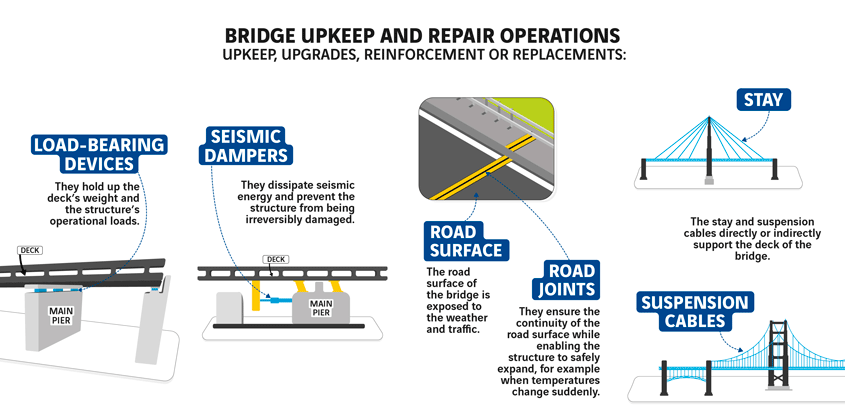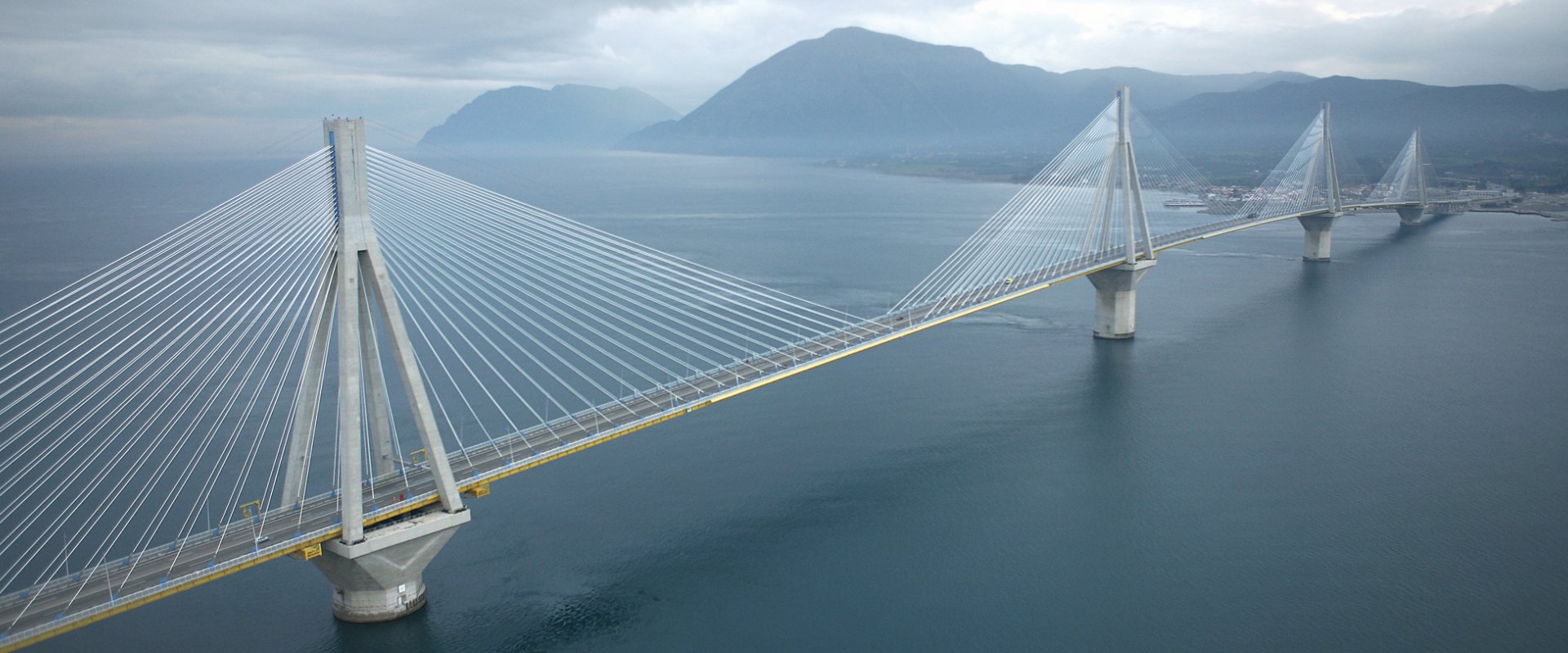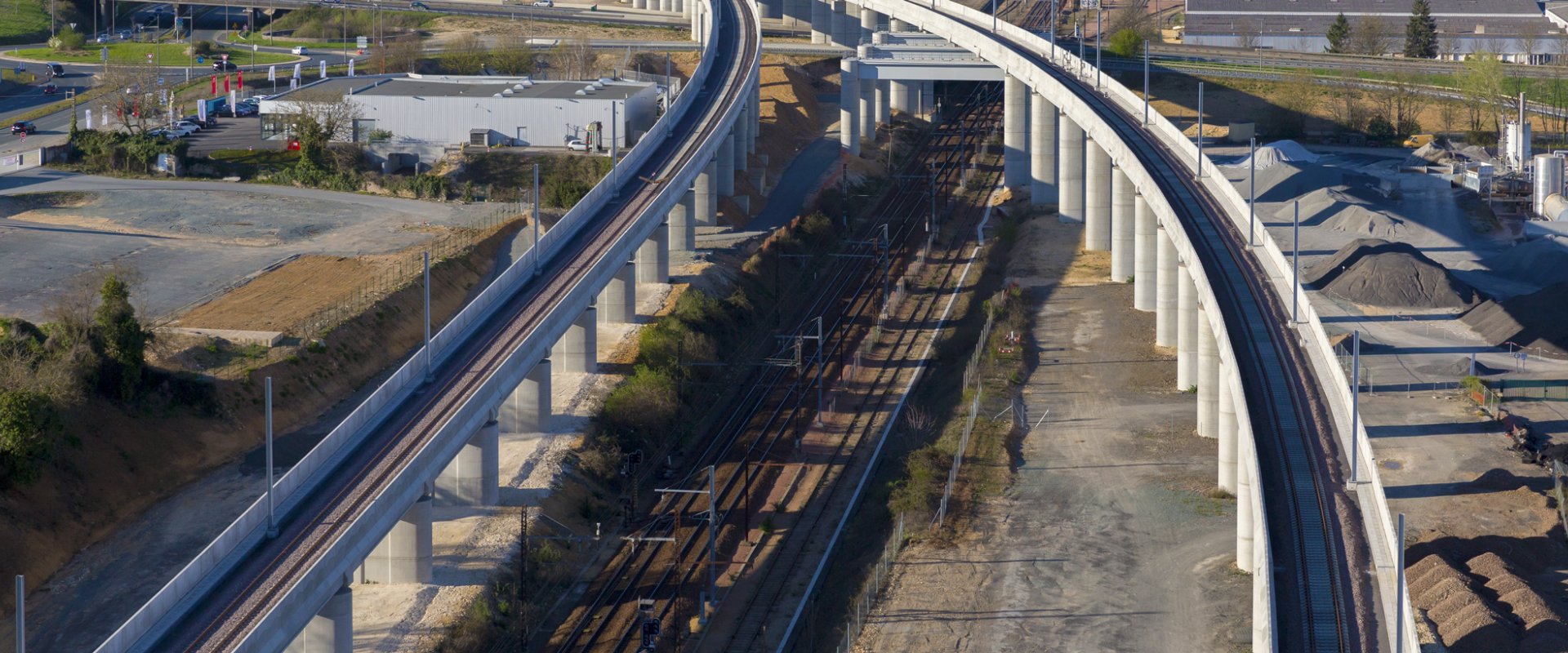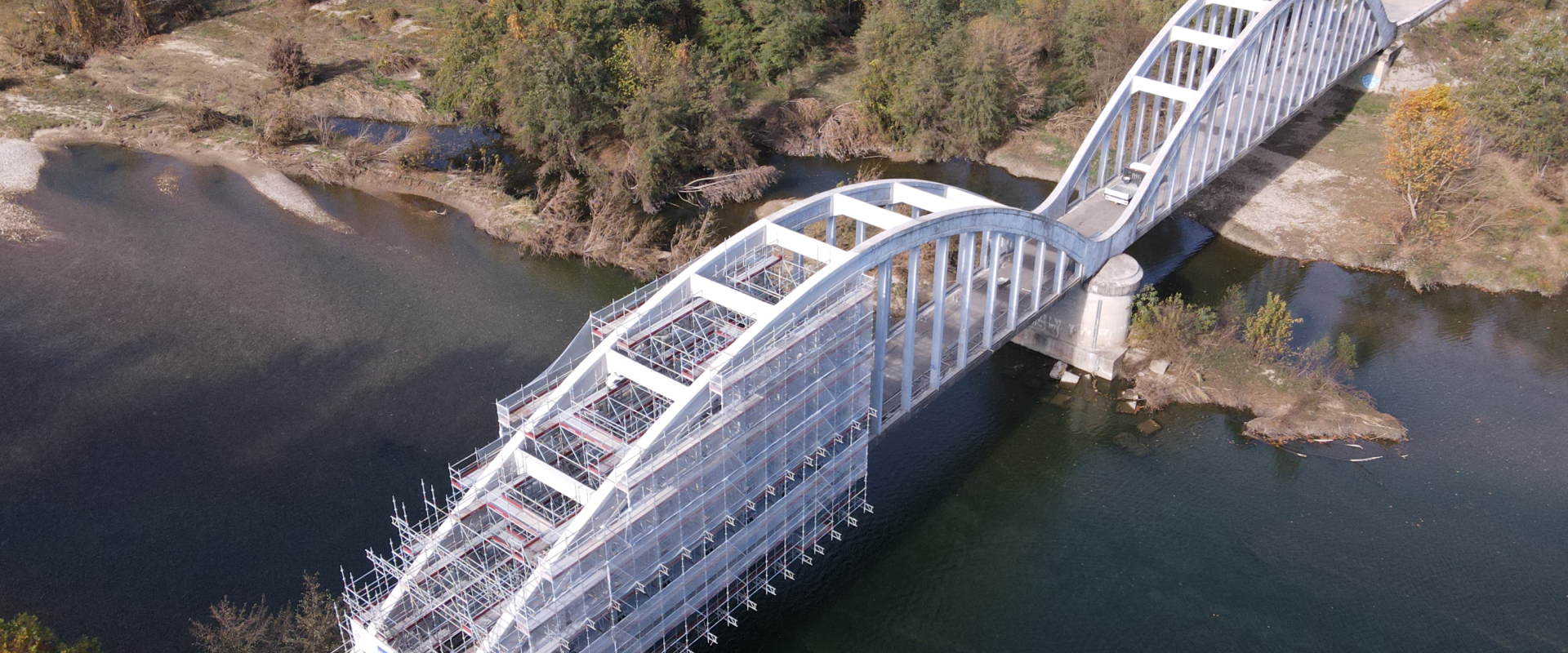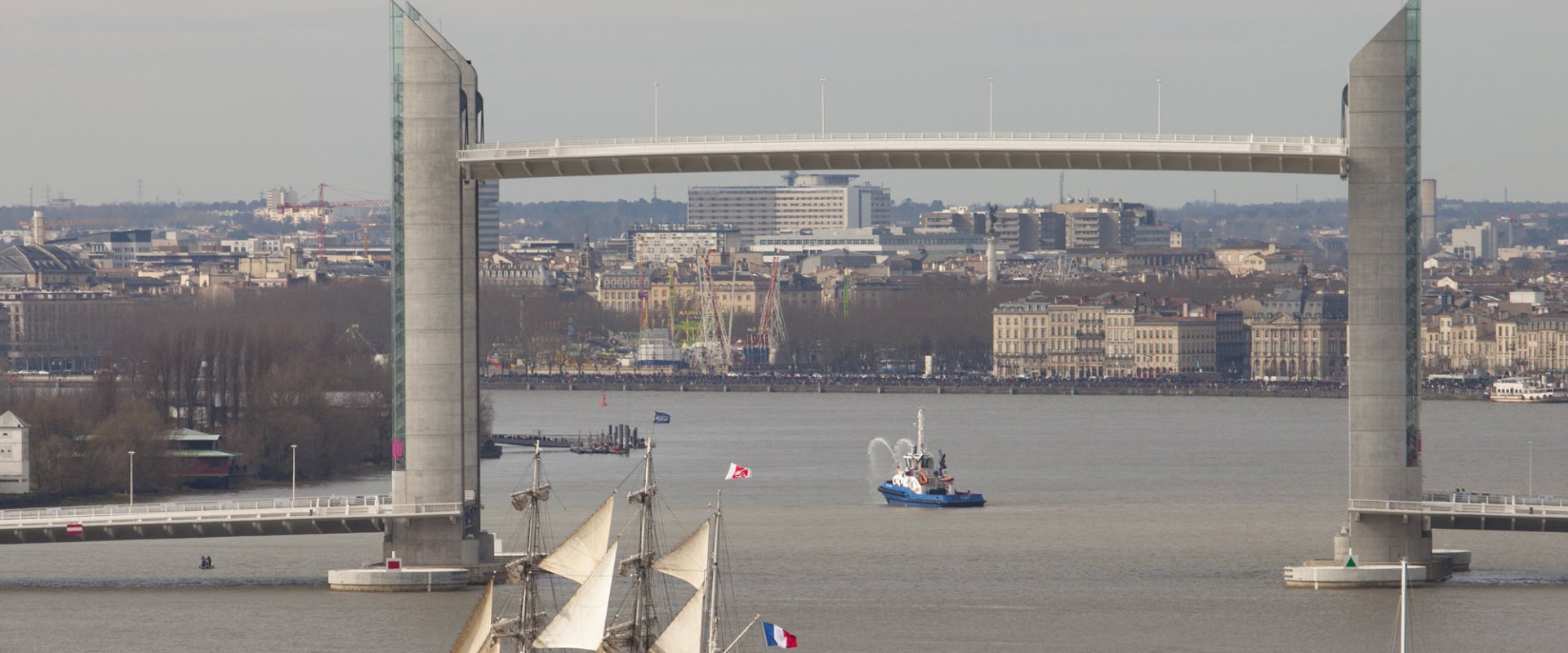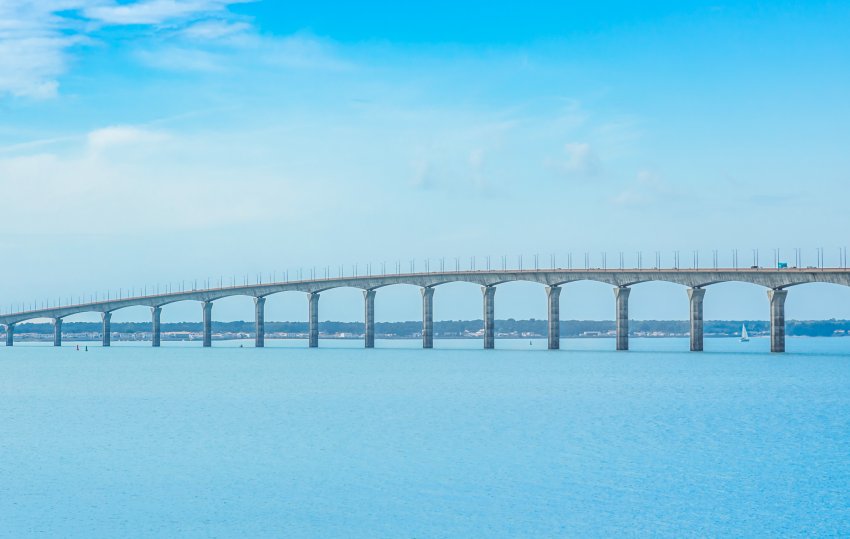
Bridge safety, the “project of the century”
We often think of bridges as indestructible concrete structures that are firmly rooted to the ground for eternity; however, they can be heavily affected by environmental conditions and increased traffic flows, alongside other factors. We must therefore step up how they are managed. Companies and public stakeholders collaborate to carry out recording and monitoring, as well as regular upkeep and repair work. The aim is to preserve these structures, which are essential to regional mobility, and the safety of the people who use them.
These images travelled around the world when the Morandi bridge in Genoa collapsed on 14 August 2018. Neighbouring countries quickly drew up plans to avoid similar accidents taking place on their own soil. But how can we boost the reliability of these structures, so thousands of drivers can travel in complete safety every day?
Ensuring bridge safety, a crucial challenge
What are some of the factors that threaten bridges?
We think of bridges as eternal, but they too have a fixed lifespan. At design, 70 to 100 years is the aim, but that figure varies according to the type of bridge and how it is used, the techniques used for construction, etc. A bridge’s ageing process is linked to how the different materials used deteriorate over time, which in turn depends on a number of factors. The first of those factors are environmental, as water and air can corrode metal framework. Most of Europe’s 800,000 road bridges were built after the war using steel and concrete, both of which are vulnerable to these factors. Extreme weather events such as droughts or storms can also weaken these structures. The intense traffic that bridges must withstand and a lack of attention and upkeep also contribute to deterioration over time.
An action plan launched in France
A few months after the tragedy in Genoa, the French Senate launched a process to gather information and assess the safety of France’s bridges. Published six months later in late June 2019, then updated in 2022, the assessment calls for action to improve how these structures are managed.
A few months later, a plan was launched with the aim of improving monitoring and carrying out essential upkeep and repair work for optimal management of national infrastructure, with targeted actions for shared structures.

In France, as many as 30,000 à 35,000 bridges could be in poor structural condition, according to the Senate's Committee on Territorial Planning and Sustainable Development.
Key steps: recording, monitoring, diagnostics, upkeep, repairs, demolition
Government, local authorities, concession holders and bridge builders
The “project of the century” requested by the Senate is being carried out by the operators of these engineering structures. Each type of bridge is managed by a different stakeholder- the government, local departments, towns, metropolitan districts or motorway concession holders. For the latter, when a structure is part of a motorway network under concession to a private company, that company is responsible for all monitoring. In the VINCI Autoroutes network, 7,000 engineering structures are regularly inspected and, where necessary, repaired, as they are used by hundreds or even thousands of vehicles every day. A cycle of inspections and visits is therefore planned. Christophe Hug, executive vice-president in charge of project management at VINCI Autoroutes, said, “We carry out different types of inspections – not only annual visits, but also at the three-year mark and more detailed periodical inspections every six years”.
Infrastructure managers are guided in this task by various experts – private engineering consultants, the Centre for Studies and Expertise on Risks, Environment, Mobility, and Urban and Country Planning (CEREMA) and, of course, civil engineering contractors.
Monitoring the condition of bridges
The first crucial step is drawing up an inventory of all assets, i.e. listing bridges and logging their “health” – enabling users to keep up with how their condition changes over time and plan monitoring and upkeep operations.
Yet local authorities still lack information on the state of their standard engineering structures. Specialised VINCI Construction teams* inspect deteriorated structures and carry out a diagnosis to determine the causes and extent of any damage found. This is a crucial step to identifying appropriate and lasting solutions. In addition to these initiatives, the teams are developing solutions that enable local authorities to commit to risk prevention by constantly monitoring their structures.
*Sixense
For example, they designed, created and installed a structural health monitoring system (SHMS) for the Komárom cable-stayed bridge between Hungary and Slovakia. The SHMS enables users to track the structure’s behaviour and raise the alert in the event of any abnormal activity, in order to anticipate and plan maintenance operations and ensure the bridge is safe.
Various upkeep and repair operations
We then carry out standard or specialised preventative upkeep operations where deterioration is expected or, if a structure is already altered, repair work as needed. These operations are highly varied, including road surface upkeep on bridges by replacing the upper surface with a new, lighter and more watertight one, replacing road joints, and more. Take, for example, another maintenance operation carried out in 2022 by VINCI Construction** teams in the Bordeaux area to retighten the cable bands of the load-bearing suspension cables on the Pont d’Aquitaine. It’s a crucial operation given that, ultimately, these components bear the weight of the suspended structure!
**Freyssinet
When no viable techno-economic solution for rehabilitation, adjustment or reinforcement can be found, the last resort is demolition. In June 2022, VINCI Autoroutes teams demolished then replaced a motorway bridge in the Drome department that was built in 1963, enabling the A7 motorway to cross the RN7.
Bridge monitoring through technology
What’s more, there is good news for those responsible for ensuring bridge safety – technology can, by enabling preventive maintenance, limit the need for repair work on these structures.
And technology is central to a call for projects titled « Ponts Connectés (“connected bridges”) » launched by the French government in coordination with CEREMA as part of the “France Relance” economic stimulus plan.
Seventeen winning projects will therefore be trialled, including four consortiums led by VINCI Companies.***. One of them developed VIVOA, a structural inspection solution that harnesses artificial intelligence algorithms to carry out video analysis and automatically identify typical damage.
*** Sixense et Freyssinet
A certain number of innovative tools are already in place. For example, in Greece, the Rion-Antirion bridge, – designed, financed, built and operated by VINCI – has been kitted out with over 80 sensors related to weather stations, accelerometers, pylons, cables and more. These sensors ensure active monitoring that enables the bridge’s managers to better pinpoint the focuses of their inspections and organise more effective preventive action.
Connected objects, artificial intelligence and big data are all promising solutions to help us rise to this major challenge in the future.
Most viewed
Explore more
Words from researchers: let's fight stereotypes!
Charlotte, a research fellow at École des Mines, and Erwan, a university professor and researcher at AgroParisTech, talk…
Fondation VINCI pour la Cité: opening the door to others is another way of reaching out!
With some 1.3 million organisations and 2 million employees, France can lay claim to a dynamic network of associations…
Sea water desalination: a solution for turning the tide on the water scarcity crisis?
As water shortages continue causing havoc in a growing number of regions around the world, an age-old idea is experiencing a…
